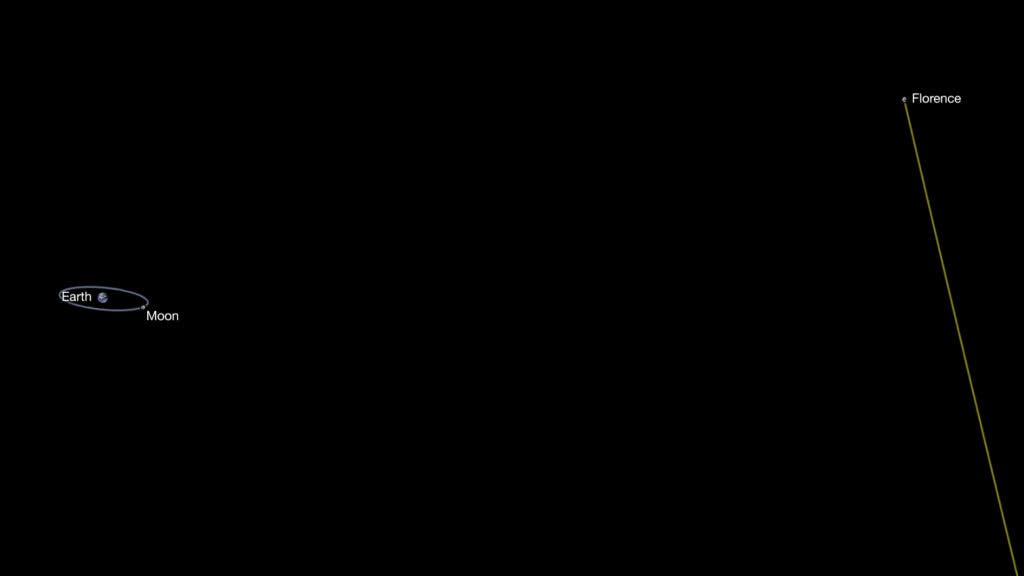A big chunk of space-rock known as asteroid Florence will pass by Earth on Sept. 1, 2017, at a safe 7,0 million kilometers (4,4 million miles) out — about 18 times the distance between the Earth and the Moon.
Not to panic, but stuff from space is constantly falling on Earth. For the most part, it’s really small stuff like specks of dust, that fizzles harmlessly — NASA estimates that 100 tones of such material hit the atmosphere daily. Every year or so, an asteroid about the size of a car winds its way to our blue corner of the universe and burns up in a quite spectacular (but still harmless) fireball. The somewhat dangerous bits (between 25-1,000 meters) that even have a chance at impacting the ground, come about every 2,000 years or so. The really dangerous ones, like the ones that kill dinosaurs, are larger than one kilometer in diameter and come about once every few millions of years.
Size-wise, Florence is one of the latter. Clocking in at some 4,4 kilometers (2,7 miles) in diameter, as measured by NASA’s Spitzer Space Telescope and NEOWISE mission, it’s definitely capable of wiping us clear off the planet. But luckily for us, it won’t — instead, it will harmlessly pass by close enough to be studied in detail.
The asteroid was discovered in March 1981 at the Spring Observatory in Australia. It’s not the first time it came to visit, but this is the closest it will ever be since 1890 and the closest it will ever be until after 2500. That being said, there will probably still be a collective sigh of relief as Florence zips by, given the sheer size of this thing.
“While many known asteroids have passed by closer to Earth than Florence will on September 1, all of those were estimated to be smaller,” said Paul Chodas, manager of NASA’s Center for Near-Earth Object Studies (CNEOS) at the agency’s Jet Propulsion Laboratory in Pasadena, California.
“Florence is the largest asteroid to pass by our planet this close since the NASA program to detect and track near-Earth asteroids began.”
It’s not all worry, however. The size and close proximity of Florence mean that scientists will have an opportunity to peer at the body in very high detail. Radar imaging of the asteroid is already planned at NASA’s Goldstone Solar System Radar in California and at the National Science Foundation’s Arecibo Observatory in Puerto Rico. These should measure the real size of Florence and reveal surface details as small as 10 meters (30 feet).










